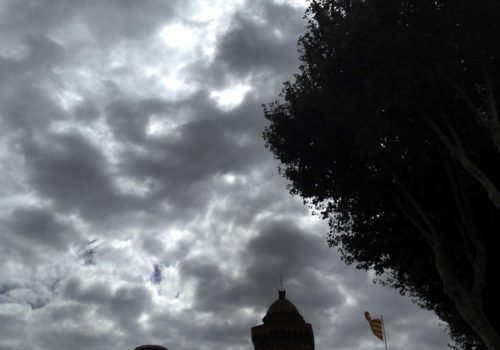As my wife Tereza and I descended through treacherous crosswinds into Perpignan today I sat up sharp with the recollection of my promise to deliver a daily diary to Le Journal- so here we go. I’ve heard for years about Visa Pour L’Image and now am both terrified and thrilled to be invited to exhibit this year.
I was anxious to see my exhibit, how the prints turned out and how it was hung. Then I thought about the work here – so many brilliant photographers and exhibitions. I wondered what I might see that would inspire me. I don’t see enough new work but when I do, I remember it’s necessary, like breathing.
And given the state of the photojournalism, I was curious what the future holds and what those attending are thinking about this now much beaten to death question. But seriously, here we are at the premiere photojournalism festival in the middle of this transition from the old model to… whatever comes next. Can we make a living at photojournalism, or any kind of photography?
After getting our credentials from the super warm and professional Visa team, we headed to see my exhibit – surprise – my show “Fearless Genius: The Digital Revolution 1985-2000” hangs in an old prison! It looks absolutely beautiful to see the framed prints against the textured, ancient walls. The prints by Central Dupon Images are gorgeous. They made even old pushed tri-x look great.
My first inspiration was my fellow exhibitor in the prison now called Covent Saint Claire, Erika Larsen of Redux and her photographs of the Sámi people she shot for National Geographic. Delicate, classic and slowly unfurling a rich mist of complex traditions, her images show great respect and care.
As for my questions about the future of photojournalism, within an hour of my arrival here, I could hear this topic being discussed everywhere I turned. Thankfully, a glass of red wine was nearby before I dove into the discussion.
So I would say there is one, a future for photojournalism that is. With Erika’s project, with all the amazing work that Visa presents, year after year, there is no doubt. There will always be photojournalists telling stories.
This is not a new problem of course, and was first brought to my attention in 1977 when a senior photographer at the San Francisco Examiner told me to forget about a job on a daily newspaper. Newspapers were dead he said. Go into TV he urged. And that was way before digital destroyed the old models in publishing. So what’s next? I’m really interested in finding the new ideas. I will be asking people I meet during the week and sharing whatever I find that seems promising. The week is off to a great start.
To be continued…
Doug Menuez
















